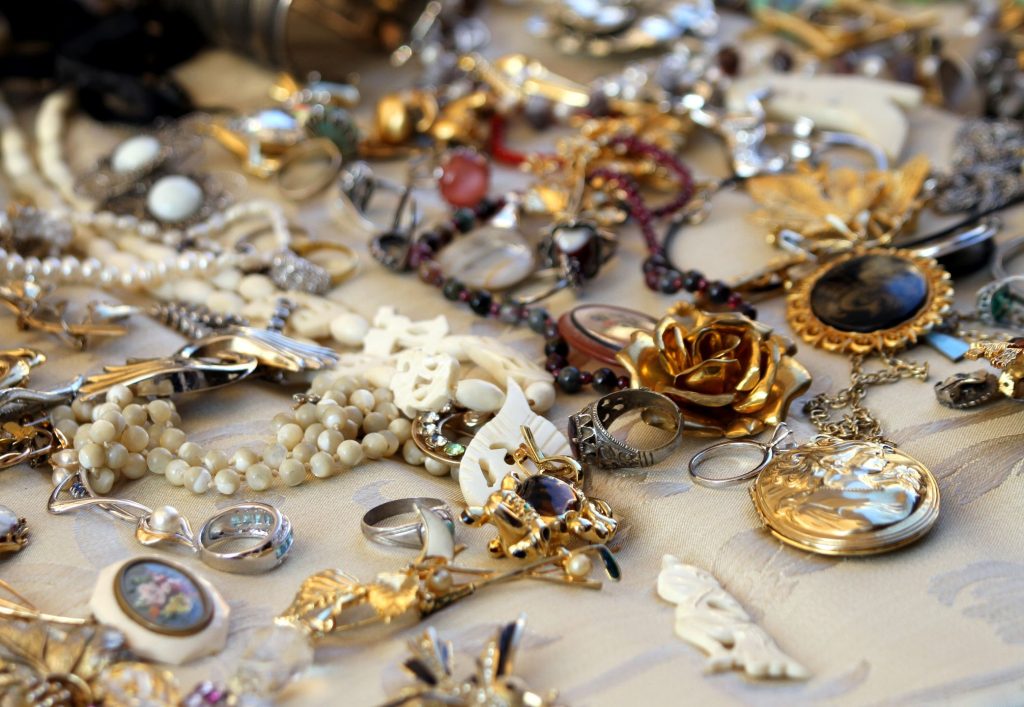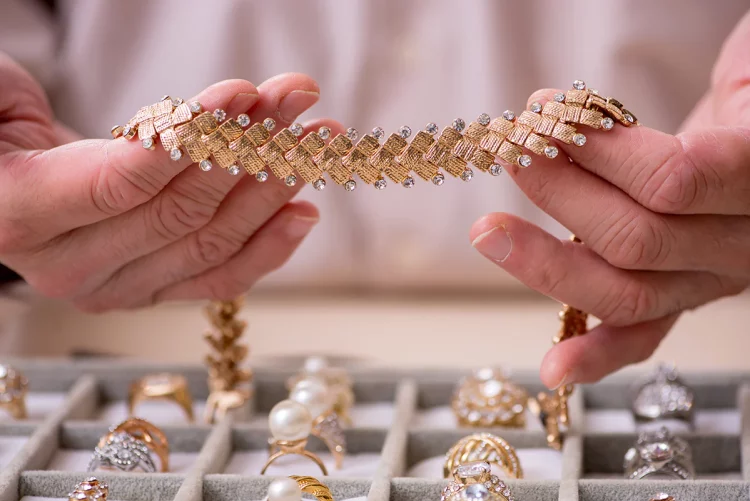Gold jewelry has long been regarded as a symbol of wealth, status, and timeless beauty. Beyond its aesthetic appeal, it has also become a desirable investment vehicle for discerning buyers and collectors. With the right knowledge and approach, investing in gold jewelry can be a lucrative endeavor. In this article, we will explore practical tips on how to select gold jewelry that will appreciate in value, understand the difference between gold jewelry as a luxury item versus an investment, and examine the impact of brand, design, and market trends on jewelry prices.
How to Select Gold Jewelry That Will Appreciate in Value
When it comes to gold jewelry, not all pieces are created equal in terms of investment potential. While most gold jewelry holds intrinsic value due to its material, certain pieces can appreciate over time, especially those with a combination of high-quality craftsmanship, unique design, and strong demand. Here are several key factors to consider when selecting gold jewelry that is likely to appreciate in value:
1. Gold Purity
The purity of the gold used in jewelry is an essential factor to consider. Gold is measured in karats, with 24-karat gold being the purest form. While 22-karat and 18-karat gold are also common in jewelry, they may be less valuable due to the presence of alloy metals that affect the gold’s purity. When investing in gold jewelry, look for pieces made from high-purity gold, as they will hold more value over time compared to lower-purity alternatives.
2. Design and Craftsmanship
The quality of craftsmanship and design can significantly influence the potential appreciation of a piece. Jewelry from renowned designers or brands with a reputation for quality craftsmanship is likely to retain or even increase in value. Pieces with intricate, timeless designs or those that reflect a specific cultural or historical significance tend to be highly sought after by collectors. Furthermore, hand-crafted or limited-edition items often appeal to buyers looking for unique pieces, which can contribute to their long-term value.
3. Rarity and Exclusivity
Just as with any other investment, rarity plays a crucial role in determining the potential appreciation of gold jewelry. Pieces that are limited in number or have unique, rare features tend to appreciate more than mass-produced items. For example, jewelry pieces that feature rare gemstones or vintage designs often command higher prices due to their scarcity and desirability among collectors.
4. Condition and Maintenance
Gold jewelry that is well-maintained and in excellent condition will generally appreciate more over time. Items that show signs of wear, damage, or poor maintenance may lose value, especially if they require expensive repairs. As a buyer, it’s essential to choose pieces that have been carefully stored and kept in optimal condition. Collectors often invest in pieces that have not been altered or damaged, preserving their original charm and appeal.
Understanding the Difference Between Gold Jewelry as a Luxury Item vs. an Investment
While gold jewelry has inherent value due to its precious metal content, it’s important to understand the distinction between jewelry as a luxury item and as an investment. This distinction can help buyers and collectors make more informed decisions when purchasing pieces.
1. Gold Jewelry as a Luxury Item
Gold jewelry is often purchased primarily for its aesthetic appeal and as a status symbol. Luxury items are typically valued for their design, brand name, and the prestige associated with owning them. These pieces are designed to be worn and enjoyed, rather than stored solely for their potential monetary return.
For example, a piece of gold jewelry from a famous designer like Cartier or Tiffany & Co. may command a premium price due to its brand reputation, but this price is often based on its luxury status rather than the intrinsic value of the gold itself. While these pieces may hold their value well and may even appreciate over time, they are primarily valued for their desirability as luxury items.
2. Gold Jewelry as an Investment
On the other hand, gold jewelry can also be seen as an investment. This refers to pieces that are specifically purchased with the intention of gaining financial returns, either through their gold content or through their potential for appreciation in value over time. Investment-grade jewelry tends to have certain features that make it appealing to collectors and investors, such as high purity, rarity, and the potential for historical or cultural significance.
Unlike luxury items, investment-grade jewelry is typically purchased for its ability to retain or increase in value, rather than for its appearance. When considering gold jewelry as an investment, it’s essential to focus on factors such as purity, craftsmanship, and potential scarcity.
Tips for Collecting Vintage and Rare Gold Jewelry Pieces
Collecting vintage and rare gold jewelry pieces can be a rewarding pursuit, both financially and emotionally. As with any form of collection, there are strategies to maximize the potential for appreciation while minimizing risk. Here are some tips for those looking to collect vintage and rare gold jewelry:
1. Focus on Iconic Time Periods
Certain time periods are known for producing iconic and valuable pieces of jewelry. For example, the Art Deco period (1920s–1930s) is highly sought after due to its bold, geometric designs and use of high-quality materials. Similarly, the Victorian era (19th century) produced intricate and ornate designs that are highly valued by collectors today. Focusing on jewelry from well-known design movements or historical periods can increase the likelihood of finding valuable, collectible pieces.
2. Condition Is Key
The condition of vintage and rare gold jewelry is one of the most important factors influencing its value. Pieces that are in pristine condition, with minimal signs of wear or damage, are much more likely to appreciate in value over time. Even slight imperfections, such as scratches or missing stones, can lower a piece’s market value. When collecting vintage jewelry, it’s crucial to carefully inspect the condition and seek out pieces that have been well-maintained or restored to their original state.

3. Provenance and Documentation
Provenance refers to the history of ownership and authenticity of a piece of jewelry. When collecting rare gold jewelry, it’s essential to have documentation that traces the piece’s origin and previous owners. Pieces with well-documented histories and authenticity certificates are more likely to command higher prices and be seen as valuable investments. Additionally, items with celebrity or historical connections often fetch premium prices due to their unique background.
4. Stay Informed About Market Trends
The value of vintage and rare jewelry is closely linked to market trends, which can fluctuate over time. To maximize investment potential, collectors should stay informed about trends in the jewelry market, particularly with respect to the demand for certain styles, periods, or designers. Auction results, online marketplaces, and specialist dealers can provide valuable insights into which types of jewelry are in demand and likely to appreciate in value.
The Impact of Brand, Design, and Market Trends on Jewelry Prices
When it comes to gold jewelry, the brand, design, and broader market trends play a significant role in determining prices. Understanding these factors can help buyers and collectors make more informed decisions when choosing pieces to invest in.
1. Brand Influence
Certain jewelry brands are known for their high-quality craftsmanship and timeless designs, and pieces from these brands can command a significant premium. High-end brands like Cartier, Van Cleef & Arpels, and Bulgari are particularly sought after for both their luxury status and the potential for price appreciation. Jewelry from these brands is often seen as a safe investment, as it holds its value well over time and is likely to appreciate due to the brand’s enduring popularity.
2. Design Trends
Design plays a pivotal role in determining the value of gold jewelry. While classic, timeless designs generally retain value over time, certain trends can influence market prices in the short term. For example, minimalist designs have become increasingly popular in recent years, and pieces with sleek, contemporary designs often fetch higher prices among younger buyers. On the other hand, vintage designs and intricate, artisanal pieces can attract collectors who value craftsmanship and history.
3. Market Trends
Like any investment, the price of gold jewelry is subject to fluctuations based on broader market trends. Economic factors such as inflation, interest rates, and the demand for gold can affect jewelry prices. Additionally, changes in fashion trends, such as a resurgence of interest in certain periods or designs, can lead to increased demand and higher prices for specific types of jewelry.
Conclusion
Investing in gold jewelry requires a combination of knowledge, patience, and a keen eye for quality and rarity. By understanding how to select pieces that will appreciate in value, recognizing the difference between luxury jewelry and investment-grade items, and staying informed about market trends, buyers and collectors can make informed decisions that lead to profitable investments. Whether you are seeking to build a collection of vintage treasures or invest in high-quality contemporary pieces, gold jewelry has the potential to be a rewarding addition to your investment portfolio.



































